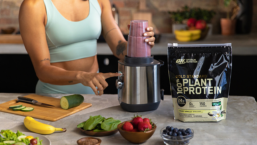Home » Keywords: » flexitarian
Items Tagged with 'flexitarian'
ARTICLES
The company brings its functional ingredient systems into the plant-based food and beverage space
Read More
Plant-Based Dairy Options Proliferate, Provide More Mealtime Options
Consumers purchasing plant-based options skew young, as 59% of shoppers between 18-34 have engaged in the category
April 20, 2023
Silk Mocha Almond Creamer, and So Delicious Dairy Free French Vanilla Coconutmilk Creamer
Danone North America brings continued innovation to the plant-based creamer aisle
February 1, 2023
ADM: Tomorrow’s Nutrition Trends
ADM shares global trends set to drive nutrition innovation in 2023
November 2, 2022
Optimum Nutrition Gold Standard 100% Plant Protein Powder
The new formula is crafted with 24g of premium plant-based protein to fuel a range of fitness activities
November 2, 2022
Consumers Continue to Seek Plant-Forward Diets
Some consumers are abstaining from animal products by going vegan or vegetarian, but many more are simply reducing consumption of animal products with a flexitarian or semi-vegetarian diet
August 10, 2022
BENEO: Power of Plants
BENEO showcases new faba bean ingredients at IFT 2022
July 13, 2022
DSM: On-Trend Taste, Texture
DSM highlights nutritious snacking and indulgent plant-based concepts delivering next-generation taste, texture and health at IFT FIRST
June 22, 2022
CP Kelco: Better Plant-Based Meats, Labels
CP Kelco’s new nature-based offerings meet demands for improved taste, texture and clean labels
March 18, 2022
EVENTS
Webinar Featured Event
10/12/23 to 10/12/24
Contact: Meg K.
Prepared Foods' 21st Annual Spirit of Innovation Awards
Webinar
10/17/23 to 10/17/24
Contact: Meg K.
Deliver Next-Level Taste and Texture in Plant-Based Dairy
Webinar
10/19/23 to 10/19/24
Contact: Meg K.










